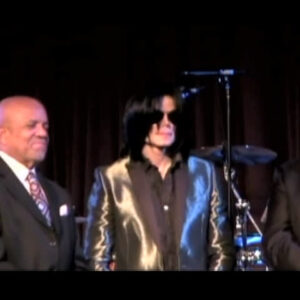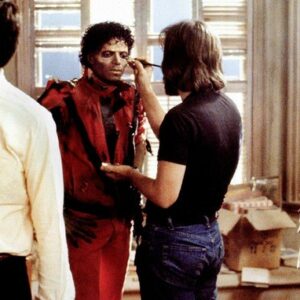Introduction to Tina Turner’s Iconic Career
Tina Turner’s name is synonymous with strength, resilience, and, most of all, rebellion. From humble beginnings in Nutbush, Tennessee, she transcended the barriers of her upbringing to become an iconic figure in music, not just for her powerful voice but for her ability to challenge the status quo. Throughout her career, she navigated personal tragedies and systemic barriers, all while crafting a persona that would inspire generations. Her journey from an unknown girl in the rural South to a global superstar is a story of grit and determination, marked by her unapologetic embrace of rebellion. It is in this defiance where we find the heart of Tina Turner’s art.
Born Anna Mae Bullock in 1939, Turner’s early life was marked by hardships that many would find insurmountable. Her parents separated when she was young, and she was sent to live with her grandmother. Music became her solace, and by the late 1950s, she had found herself in the orbit of Ike Turner, whose Kings of Rhythm band would serve as her launchpad. Together, they became Ike & Tina Turner, a dynamic duo that would carve their way through the 1960s and 1970s with their electrifying performances. But behind the glamour was a personal struggle that would come to define her as much as her musical achievements.
Defining Rebellion in Turner’s Work
Rebellion is a consistent theme in Tina Turner’s body of work, both in the lyrics of her songs and the imagery she crafted on stage. Her music is often about breaking free—whether from personal relationships, societal expectations, or even the limitations of her own past. This rebellion is not just artistic; it is deeply personal, forged in the fires of her tumultuous life with Ike Turner and her subsequent rebirth as a solo artist.
In Tina’s music, rebellion is a tool of liberation. It’s a refusal to be silenced, to be oppressed, to be diminished. Her songs often speak to women—and men—who have faced similar struggles. Songs like “What’s Love Got to Do with It” and “Private Dancer” explore themes of self-worth, love, and autonomy, all tinged with a rebellious spirit that refuses to conform to traditional gender roles or cultural norms. Turner’s art embodies the notion that rebellion, when channeled constructively, becomes a form of empowerment.
Personal Rebellion
Perhaps the most striking aspect of Tina Turner’s rebellion is how she channeled her personal struggles into her music. Her relationship with Ike Turner, characterized by abuse and control, became one of the most publicized and defining aspects of her life. Yet, instead of being crushed by it, Turner used her pain to fuel her art. She walked away from Ike in 1976 with nothing but her name, but that was enough. It marked the beginning of her true personal rebellion—not just against Ike, but against a society that told her she couldn’t succeed on her own.
In songs like “Better Be Good to Me,” the themes of personal liberation and defiance come through loud and clear. Tina’s voice, with its raw emotional intensity, speaks to the pain and frustration of someone who has been pushed to their limits but refuses to break. Her performances of the 1980s, where she reclaimed her identity as a solo artist, were not just about music; they were statements of independence. She was no longer tethered to Ike’s shadow. The world watched as she rebuilt her career, embodying the essence of personal rebellion.
Cultural Rebellion
Tina Turner’s rebellion wasn’t just personal—it was cultural. In the music industry, dominated by white male figures, Turner shattered gender and racial norms with her sheer force of will. As a Black woman in rock and roll, a genre largely dominated by white men, Turner’s very presence on the stage was an act of defiance. She was unapologetic in her style, her performance, and her voice, demanding the respect and admiration that many tried to deny her.
Turner’s performances were a stark contrast to the feminine norms of her time. Where many female performers were expected to be soft and delicate, Turner’s stage presence was aggressive, bold, and explosive. Her energy was unmatched, her dance moves captivating, and her voice a force of nature. She embraced her sexuality without apology, blending sensuality with strength in a way that was revolutionary for women in the 1970s and 1980s. Songs like “Proud Mary” and “River Deep – Mountain High” not only broke new ground musically but also challenged what Black women could achieve in mainstream entertainment.
Beyond music, Turner also broke cultural barriers in fashion and image. Her bold fashion choices, characterized by short skirts, high heels, and wild hairstyles, redefined the standard for women in rock and roll. She wasn’t just a singer; she was a symbol of freedom and rebellion, using every aspect of her artistry to challenge societal norms. Tina’s image, just as much as her music, was a cultural rebellion—a rejection of what women, particularly Black women, were told they could or couldn’t be.
Musical Analysis
Turner’s rebellion is best understood through the music itself, where her themes of defiance and self-empowerment are most vividly expressed. Songs like “What’s Love Got to Do with It” and “Private Dancer” showcase Turner at her finest—both musically and thematically.
“What’s Love Got to Do with It” is perhaps Turner’s most iconic anthem of rebellion. On the surface, it’s a love song, but beneath the smooth melody lies a narrative of resistance. The song dismisses the idea of love as a necessary condition for a relationship, reflecting Turner’s own disillusionment with romantic ideals after her abusive relationship with Ike. The line, “Who needs a heart when a heart can be broken?” encapsulates a deep-seated rebellion against the emotional vulnerability that society often demands of women.
In “Private Dancer,” Turner delves into the complexities of power and autonomy. The song tells the story of a woman who dances for money, detached from the emotional connections that others might expect. The lyrics explore themes of control, independence, and commodification, all within a framework of rebellion. The character in the song is not a victim; she’s in control of her own fate, choosing to dance on her terms, for her benefit. The music video, with its stark, almost industrial visuals, underscores this narrative of self-empowerment and rebellion.
Visual Symbolism
Tina Turner’s stage presence and visual imagery are as rebellious as her music. From her famous lion-mane hairstyle to her sequined miniskirts, Turner crafted a visual persona that was larger than life. She used fashion as a form of rebellion, rejecting the traditional, conservative styles expected of women in her era. Her costumes—often bold, revealing, and extravagant—became symbols of her power and freedom.
The way Turner moved on stage was itself a rebellion. Her dance style was aggressive and energetic, often described as primal. Unlike many female performers who were choreographed to appear graceful and delicate, Turner’s performances were raw and unrestrained. She commanded the stage, owning every inch of it with her physicality. In music videos like “What’s Love Got to Do with It,” she uses subtle visual cues to underscore her independence—walking through the streets alone, turning her back on a tumultuous past, and moving forward with determination.
Legacy of Rebellion
Tina Turner’s legacy is one of rebellion, not just in music, but in how she lived her life and overcame the adversities that came her way. Her influence can be seen in the generations of female and minority artists who have followed in her footsteps, embracing rebellion as a form of artistic and personal liberation. Turner didn’t just pave the way for women in rock—she redefined what it meant to be a female artist.
Her refusal to be pigeonholed or controlled, both by the music industry and by societal expectations, has inspired countless musicians to break free from their own constraints. Artists like Beyoncé, Rihanna, and Lady Gaga have cited Turner as an influence, particularly in how she used her personal pain to fuel her art. Turner showed the world that rebellion isn’t just about rejecting authority; it’s about reclaiming one’s power and identity.
Conclusion
Tina Turner’s career is a testament to the power of rebellion. Through her music, her stage presence, and her personal life, she crafted a legacy built on defiance and empowerment. Her refusal to be silenced or controlled turned her into a symbol of strength and resilience, inspiring generations to stand up against injustice, whether in their personal lives or in the broader cultural landscape.
Turner’s music continues to resonate because it speaks to something fundamental in all of us—the desire to break free, to challenge the norms, and to assert our independence. In her own words, Tina Turner was “simply the best,” and her legacy as a rebel and a trailblazer remains unrivaled.





